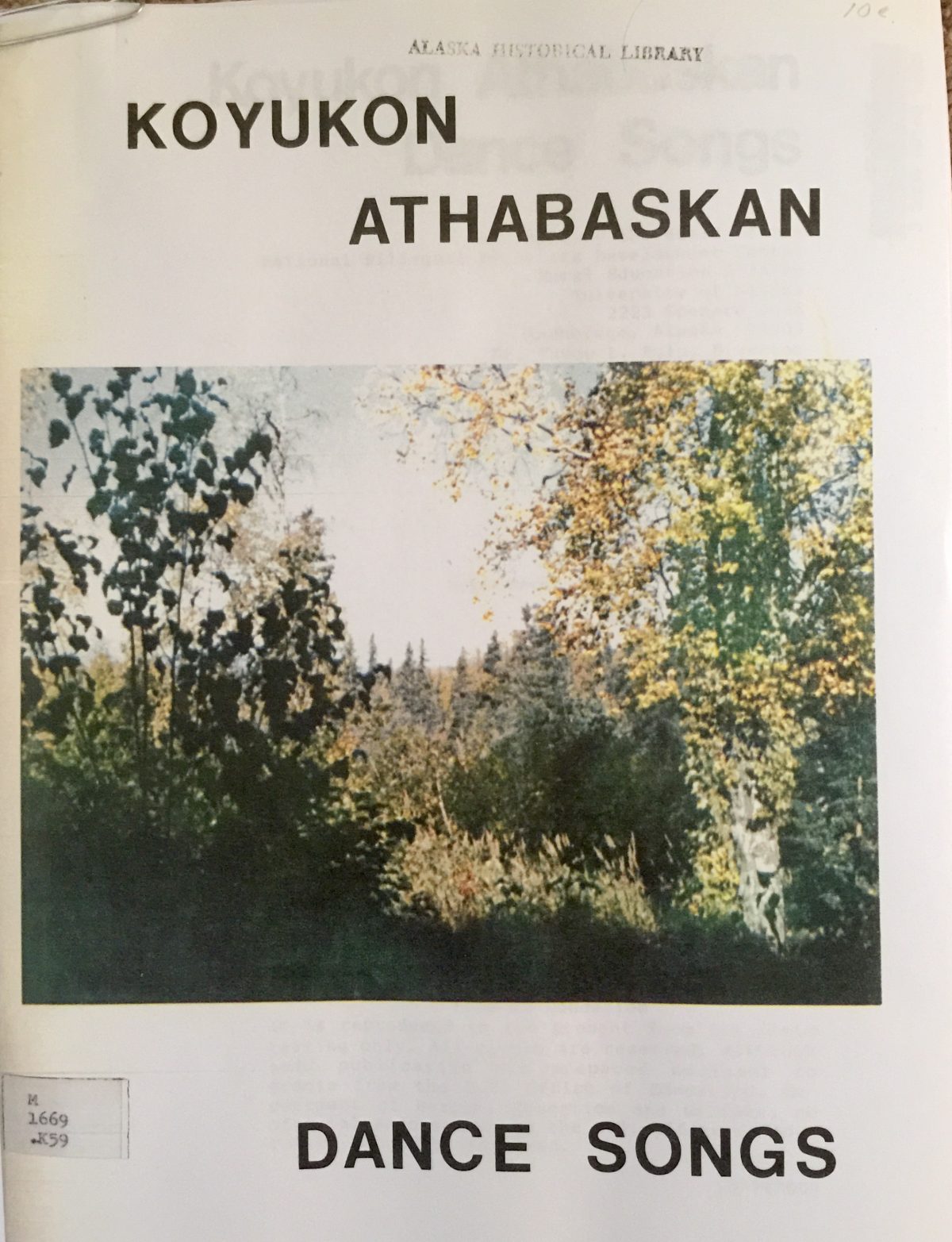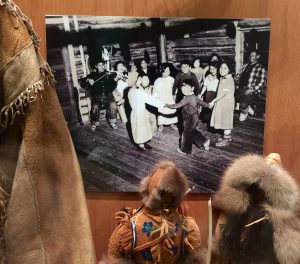I will be creating a lesson plan on Athabaskan fiddling for sixth grade music students (specifically, string players). This lesson will be 45 minutes long. This lesson will be paired with Meghan Johnson’s lesson plan about modern Athabaskan fiddling and the group that has developed to provide quality fiddle music education to students in Fairbanks.
The essential question will be, “How do other cultures influence the music we make?”, as we look at how the music of the trappers and settlers of Fort Yukon in the 1840’s influenced Athabaskan music, which led to fiddle music becoming a significant part of Athabaskan culture.
Students will be working with several different artifacts documenting the development of fiddle music in Athabaskan culture, including photographs from the Alaska State Museum Archive (like the one above), texts that give an overview of the history, and actual Athabaskan fiddle songs that have been passed down and continue to be played in the Interior (a page of one is shown below). There are also many YouTube videos Meghan and I will be working with, documenting the more current history of the fiddle music.
This is where I am a little stuck. I am trying to reconcile the idea that this is not a complete, laid-out lesson plan with activities, and yet I still need to have something for students to “do”. I want students to take a look at the evidence and come up with their own thoughts about how these different people groups affected the development of fiddle music in Athabaskan culture. Beyond that, I would love to have a discussion where they think about their own cultures and musicianship, making the connection that the music they play in orchestra was also created from many different influences. I would leave them to reflect on the question, “How does your cultural identity influence the music you make?”.



Hi Ruth,
I think you could use one of the activities I suggested for mine- it works for a lot of projects and it’s similar to David’s: why don’t you pick a piece of music and have it “evolve” and “migrate” through the class? There are a number of ways you could do this, and the kids would be very intentional about their additions or changes. Or you could take a piece of music and play “telephone” ..as each student is taught a simple melody by the previous student, perhaps it will evolve as it is orally passed. what will the piece sound like at the end? Are there pros and cons written music? Etc?
Otherwise, I think it is awesome!!
Ruth, this sounds like a great lesson plan. I think it is very interesting that the fiddle got introduced the way that it did and stuck around so strongly. I like how the kids would look at how and where the influences came from. Maybe the students could also create a small piece of music that they would each influence together. One student could play a few bars with all the students repeating. Then another could play a few bars after that to add on. You could also play a song just before and then ask students to come up with something. Does the music that you played influence the students choice of songs? Does another student influence the rest of the group?
Looks to be a great foundation for a lesson. Let’s think about what the kids do.
I’ve found it can be helpful to let students explore a concept in a subject area they are familiar with, then ask them to apply that construct back to the intended subject area.
They could focus on the “influence schema” in a variety of other musical or artistic influences. Or they could be invited to find examples of influence from anywhere. For example surfing, went on land to skateboards and on to ski slopes on snowboards, etc.
Excellent ideas!